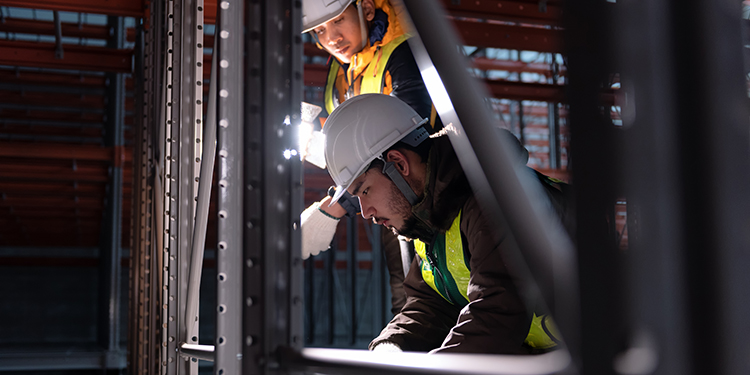Building Codes And Rack Repair: What You Need To Know

The majority of jurisdictions in the U.S. have adopted the International Code Council’s International Building Code (IBC) as their base code standard governing the safe design and construction of building structures. The IBC references RMI’s ANSI MH16.1: Specification for the Design, Testing and Utilization of Industrial Steel Storage Racks in section 2209.1, as the standard for safe design and installation of steel storage racks. The same municipalities may also require official review and permitting of pallet rack installations. Therefore, when damage to a pallet rack occurs, a review of the repair work may be required by local officials prior to performing the work.
Why? One reason is that building codes and standards evolve and improve over time, which means a rack system installed several years ago may not comply with current standards. Additionally, because of the long lifecycle of rack systems, they may be moved, reconfigured, repurposed, or changed in a manner that deviates from the original design and installation calculations. Further, the rack may have been separated from the original engineering documentation and drawings, which must be re-created, potentially adding time to the repair process and necessitating a new official review.
To ensure the safest repair, it is critical to engage a qualified, professional rack engineer to supervise and direct the assessment of the system’s condition, as well as, design and oversee the ultimate repair or replacement. The engineer can also help to determine if the repair requires an official review and new permit. In general, if the original engineering documentation is available and the system has not been relocated or reconfigured, the supervising engineer may decide to assess the system’s repair based on original design guidelines and building code standards. If the original engineering documentation is not available, or the system has been moved or relocated, best practice is to evaluate and permit the system to current building code standards.
As outlined in RMI’s “Guideline for the Assessment and Repair or Replacement of Damaged Rack – Version 2,” section 6.2.1, on projects that have original engineering drawings and documentation available, the engineer must first validate that the rack is in the original location, as specified by the documents, and that it has not been reconfigured. Per the guideline:
- If there is no change to the rack system from original drawings, the supervising engineer can review all documented instances of damage and develop appropriate repair solutions. New review by a local permitting authority is likely not to be needed (although it is advisable to verify that with the corresponding jurisdiction).
- If stamped and sealed calculations are not available from the original project, the system may need to be evaluated under current standard and Building Code requirements (as required by law), new stamped and sealed calculations may need to be created, and the project may require review and permitting by the local jurisdiction.
- If the rack configuration has changed, but documentation has not been updated and the system remains in its original facility, the supervising engineer could calculate the capacity of the system based upon the original codes that were in effect when the system was installed. This documentation is also not likely to require an official review and new permitting.
For repairs on rack without documentation and original calculations, the supervising engineer must develop an assessment process for review of the entire system prior to determining any repair solutions. Key details include: the identity of the original rack manufacturer; the number of affected parts; the type of rack construction; the sizes of damaged components; material properties; gauges; spacing; elevations; loads; anchoring; and slab. Best practice is to submit the drawings for review and permitting by the local building authority.
Want more information about rack repair? Download RMI’s Guideline for the Assessment and Repair or Replacement of Damaged Rack – Version 2.


